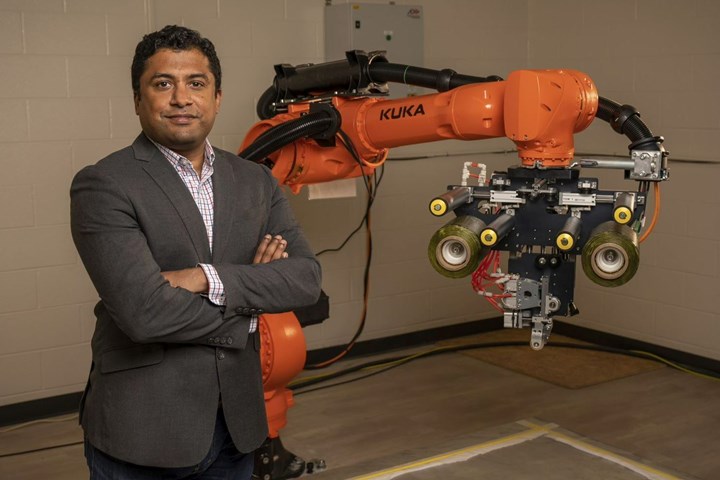UTA research builds predictive tool to determine failure risk, operating life of composites
UT Arlington, AFRL solution will use machine learning and computational tools to determine the life, durability and safety of composites used in aircraft manufacturing.
Share
Read Next
University of Texas at Arlington’s (UTA) Paul Davidson, assistant professor in the Department of Mechanical and Aerospace Engineering (MAE), is leading a team to build a predictive tool that will help determine the life, durability and safety of composites used in aircraft manufacturing.
Under the $379,500 U.S. Air Force Research Laboratory (AFRL, Wright-Patterson Air Force Base, Ohio, U.S.)-funded project, “our aim is to make lighter aircraft more durable while ensuring flight safety,” Davidson says.
The practice of using layers upon layers of composite materials laminated together to construct lighter and stronger aircraft is becoming more common across the industry, Davidson notes. The Boeing 787, for example, is made up of about 50% composite materials. The challenge in using composites, however, is the risk of delamination, which can be caused by operating conditions and impact hazards.
Davidson likens delamination to a crack in a car windshield. “Eventually, that crack grows and grows and makes the vehicle unsafe,” he points out. “We’re trying to tell the driver how much time before it becomes unsafe or needs to be strengthened or replaced.” Davidson says the project has applications for both military and commercial sectors.
Field teams will use ultrasound equipment to estimate the damage to aircraft. A predictive tool developed by Davidson will use that data for computational tests to determine failure risk and operating life of the composite structure. The project also aims to answer the questions of what repairs must be made, how long those repairs will last and whether the aircraft is safe to operate again.
“The data obtained from the field teams is often incomplete. I’m infilling missing data using machine learning and computational tools to determine composite life, durability and safety,” Davidson says. “We’ll do the impacts and stress tests on the aircraft composites virtually.”
The work will occur in UTA’s Laboratory for Advanced Materials, Manufacturing and Analysis under the AFRL’s Structural Integrity Research Collaborations for Aircraft program.
Erian Armanios, chair of MAE, says Davidson’s project is essential to flight safety, both for the military and the public. “It’s best to virtually extend the range and scale of tests, where loss of aircraft and life is eliminated,” Armanios concludes. “This project is cost-effective and lifesaving. It also brings UT Arlington to the forefront of computational composite testing, which will continue to grow in coming years.”
Related Content
-
Airbus presents unmanned Wingman concept
Fighter jet model unveiled at ILA Berlin, made from an iron structure and composite outer skin, will deliver more tactical options, supporting future combat missions.
-
LifePort acquires Aeromatrix Composites advanced materials line
The aircraft manufacturer solidifies its capability to provide next-generation advanced materials solutions to aerospace and defense customers.
-
Plant tour: Renegade Materials Corp., Miamisburg, Ohio, U.S.
Renegade Materials is known for high-performance prepregs for aerospace applications. Following its acquisition by Teijin in 2019, the company has expanded capacity and R&D efforts on a range of aerospace-targeted materials.

















